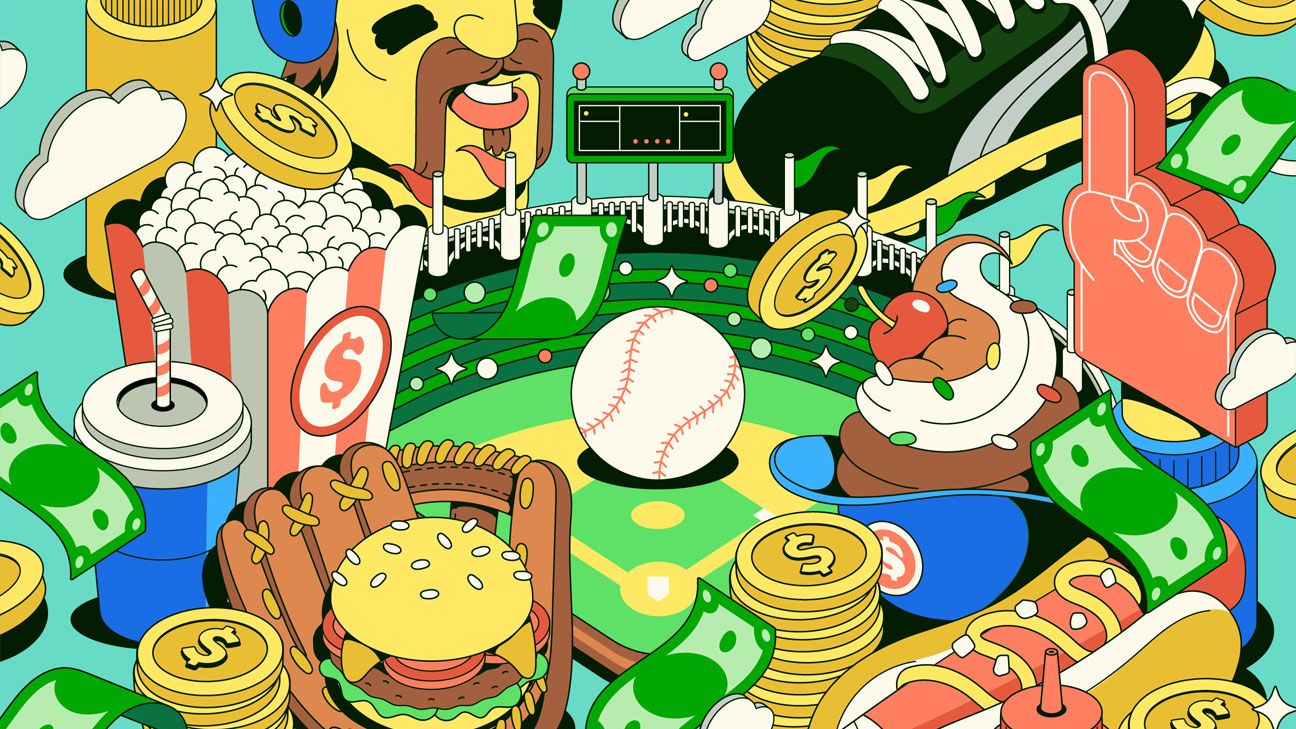It’s costing more to root, root, root for the home team, especially if you want to pony up for peanuts and Cracker Jack.
A maelstrom of complications — including COVID-19-driven supply-chain disruptions, skyrocketing fuel prices and additional spending cash available to consumers from U.S. government stimulus programs — has contributed to the rate of inflation hitting a four-decade high of 9.1% in June. The effects have rippled through consumer prices, from gas to groceries — and to the price of ballpark concessions.
ESPN polled the five hospitality vendors who supply food and beverages for MLB’s 30 teams — Sodexo Live!, Levy, Aramark, Legends and Delaware North — as well as team representatives to collect pricing data for a hot dog, nachos with cheese, Cracker Jack, domestic light beer, bottled water and soda at all 30 parks.
An official from one vendor said the company’s cost to acquire hot dogs increased between 20% and 30% from January 2021 to May 2022 — the “highest annual increase in the past thirty years,” the vendor official said.
The average price of a hot dog across all 30 MLB parks is $6.33. Fans could pay the most in Seattle at $8.00 for a Mariners dog, though T-Mobile Park has a value menu that offers reduced pricing on some items, including $3 for a junior dog. The next-highest-priced hot dog is $7.50 in San Diego, San Francisco and St. Louis, and the lowest is in Atlanta at $3.50.
The recent surge in hot dog costs has been driven by record-high prices of raw materials — “packaging, corrugate, labor, meat, spices, gas” — the vendor official said. Annual price increases for hot dogs typically ranged between 0% and 5% before January 2021, the vendor official said.
Twenty-eight MLB teams offer nachos with cheese, which cost an average of $7.14 a pop across baseball. Increased costs of wheat, corn and edible oils have sent the prices of tortilla chips skyrocketing; in the same 16-month span, prices increased 10% to 20% — “the highest in 20 years,” the vendor official said.
Chip production facilities also struggled to retain staff during the first half of 2022 and, as a result, implemented “across-the-board” wage increases and other monetary incentives for employees, which contributed to price increases too. Before 2021, annual tortilla chip cost increases ranged from 0% to 3%.
What about Cracker Jack, the go-to snack of America’s pastime, immortalized in song? Cracker Jack, offered by 28 MLB teams, will run fans $5.72 on average.
Beer, water and soda weren’t immune either. The price of soda and water rose 4% to 5% from 2021 to 2022, and beer is projected for a 4%-to-7% increase from 2021 by year’s end, according to the vendor official.
The size of beverages varied from park to park, so ESPN calculated per-ounce costs. Domestic light beer averaged $0.59 per ounce across all ballparks. According to ESPN’s data, the highest per-ounce cost for a domestic light beer is in San Francisco at $0.73 (a 20-ounce Coors Light will run you $14.50 — though according to an Oracle Park official, prices provided to ESPN include tax), and the lowest is in Seattle at $0.42 (a 12-ounce domestic beer is on its value menu for $5.00). Water costs fans $0.27 per ounce on average, while soda cost $0.28 an ounce.
Academics say the collision of disruptive forces causing inflation is unprecedented.
“Timely recoveries [are proving] elusive with facility shutdowns, waves of COVID variants, doubled demands for products, port congestions and labor shortages,” said Yale University professor of operations management Sang Kim. “Never have we witnessed a succession of disruptions like this.”
If price hikes weren’t enough, some vendors have also been facing ingredient shortages.
“It’s the worst supply chain I’ve experienced in my 30-year history,” said David Kourie, chief procurement officer and senior vice president of Sodexo North America, who previously oversaw Wendy’s supply chain, one of the world’s largest.
Delaware North — which counts the reigning World Series champion Atlanta Braves among its clients — hit a major snag last year at the worst possible time. During the Braves’ playoff run in October, Truist Park in Atlanta ran out of peanuts, said Jamie Obletz, president of Delaware North Sportservice.
“Our commissary team drove through the night to another [team’s park] whose season had ended … to load up a U-Haul truck and drive back to Atlanta to sell at the game the next night,” Obletz said.
And in San Diego earlier this year, a warehouse manager had to take a ride-sharing service to a wholesale store to reload on tortilla chips.
“There are countless stories of unsung associates trying everything possible to make sure product is there and ready to go for fans,” Obletz said. “In a normalized environment, you place orders two weeks [ahead], true up the order three days in advance, stock up the morning of and you’re ready to go. That’s not the environment we’re living in.”
Kourie and other vendors expect to experience the effects of inflation for the next 12 to 18 months, and Kourie said it might be a while before prices seem less exploitative, especially with the recent all-time national high price of fuel. Yale’s Kim and other vendors agree that supply chain issues in particular won’t resolve soon.
So, baseball fans, prepare to shell out a bit more for that hot dog next season, too.
